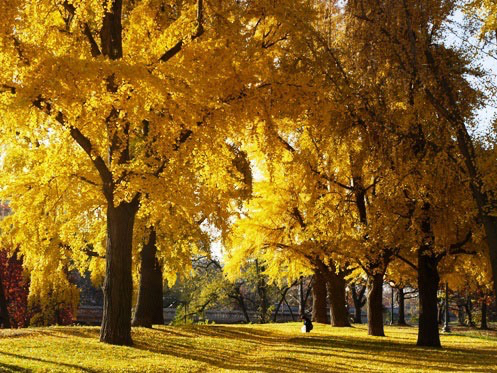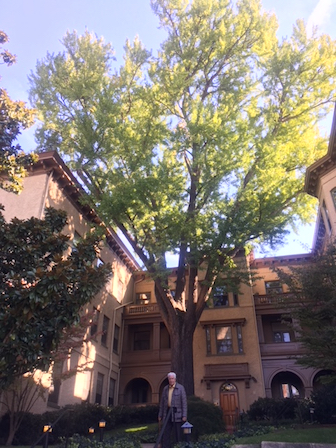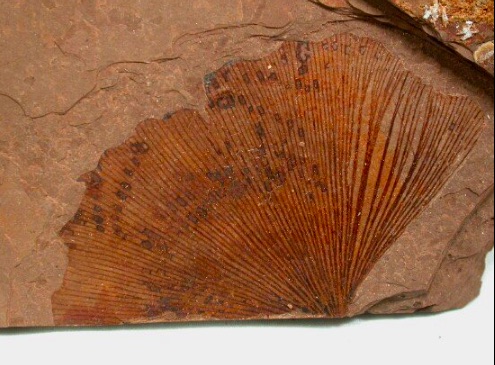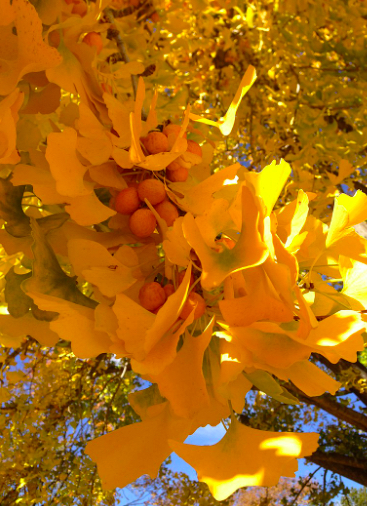Chopping Down Ginkgo Trees in Georgetown? The Debate Gets Heated

Ginkgo trees. They're all over the city, on several blocks in Georgetown, and have been here for at least 40 to 50 years, and some, for over 100, even perhaps 150 years or longer. "The 27th Street stand of Ginkgos in Georgetown are the largest and oldest in the United States, according to National Arboretum staff," said long-time Georgetown resident Nancy Flinn. Some neighbors don't want them, at least not the female Ginkgos, because at a certain time of the year, they can be pretty messy and smelly. But not everyone agrees with the proposed solution of eliminating the trees. It's a hot debate in a community, such as Georgetown, which values its trees and historic preservation.

Ginkgos, besides their stunning, bright saffron-yellow Fall display, and the canopy of shade they provide, are ideal city trees for many reasons. They rarely suffer diseases, are virtually insect resistant, invulnerable to wind and snow damage, pollution tolerant, and are deep-rooted, needing little soil, and do not disturb pavement. Ginkgos are so resilient, they're one of the few living things to survive the 1945 Hiroshima atom bomb blast. In fact, six of those trees are still alive! They're such an old plant species, ginkgos are considered "living fossils," dating back 270 million years, first appearing in the early Jurrasic period.
"They're glorious trees! They shouldn't cut them down; it's the reason I live here!" said Georgetown resident Lloyd Thorson, who believes the tree in front of his building, Downing and Vaux, on 30th Street, "must be at least 300 years old."

Some experts date the tree back to at least the 1840s. Ginkgos grow very slowly, so getting to such a large size indicates it is quite old, probably at least 150 years old. Here, the Ginkgo next to Mr. Thorson, in a closer up photo, shows the wide girth of this ancient specimen.
"There are amazing Ginkgos on the Capitol grounds, including one near the Supreme Court that dates back to Frederick Law Olmsted's landscaping [Olmsted designed NYC's Central Park], said Melanie Choukas-Bradley, author of The Joy of Forest Bathing: Reconnect with Wild Places & Rejuvenate Your Life, and other nature books, who leads nature walks sponsored by the Smithsonian Associates and the Audubon Naturalist Society. "Behind the Smithsonian castle ... there are some beautiful Ginkgos," Ms. Choukas-Bradley said.
"What a fabulous tradition to have in our historic village," said Outerbridge Horsey, noted archtiect and Georgetown neighbor, referring to the the Ginkgos' provenance. Mr. Horsey is a co-founder of "Trees For Georgetown," dedicated to "plant and maintain the trees that line the residential streets of our community." Trees For Georgetown along with Casey Trees and the DC Urban Forestry Division, nowadays, only plant male ginkgos, such as the "Princeton Sentry" in Georgetown, according to Mr. Horsey.

Ginkgo leaves are uniquely fan-shaped and prized for their beauty.
Ginkgo trees are either male or female. The females develop 1/2 to 3/4 inch seeds with a soft yellow-brown outer layer and a hard shell on the inside. The nut-like shells in the center of the seed are prized in Asia as a delicacy. You'll often see Asian cooks gathering the Ginkgo seeds on DC sidewalks! To some Georgetowners, though, female Ginkgo seeds, once they drop and get crushed - often on sidewalks - are thought of as a smelly nuisance during the month their berries drop (about November/December). And herein lies the controversy: What to do about those stinkin' berries?

The people who want to replace the old-growth, large, old female Ginkgo trees with young male trees say the fallen berries are slippery and dangerous, and the smell is noxious (not many would disagree with that assessment!). One neighbor lamented that the berries might affect the real estate value of his home if he needed to sell during the month that the berries have dropped.
Others are passionate about saving the Ginkgo Trees. They say Georgetown's Ginkgos are historic, "old growth," huge, beautiful, and provide much needed shade. New Ginkgos would take decades to match the size of the ones they'd be standing alongside in Georgetown. Besides, trees are naturally messy, all have their drawbacks and need maintenance: Slippery leaves... sticky pollen... dirty berries that stain... dangerous branches... nasty bird droppings... Is the only fix to chop down all the trees?
None of the solutions seem perfect. Sweeping or hosing down the Ginkgo berries off the sidewalks works, but only if everyone would cooperate and do their share. One neighbor said, "Little would be the task of most residents along 27th Street [where many Ginkgo trees live] to simply sweep the pods out of harm's way now and again during the Fall season. Could those residents enjoy the pleasures of being out and about to conduct such sweeping? ... [Together] with nearby neighbors? ... Trash collectors could perhaps play a role as well."

In years past, the District sprayed the Ginkgos annually to prevent the trees from reproducing and developing berries in the first place. But the spraying hasn't been done consistently, and since the Ginkgos have to be sprayed at a specific time in their reproductive cycle, if it's raining, the spray may not be effective. Perhaps the spraying could be made more effective if the DC government cooperates, and possibly sprayed twice, said one resident.
The Georgetown East Village neighbors who want to cut down their female Ginkgos were given permission to do the deed. But so much community angst has erupted over the possibility of losing these majestic trees, the decision has been put off until the Advisory Neighborhood Commission's December 3rd meeting, when there will be a discussion and a vote by the entire ANC, the non-partisan neighborhood body made up of locally elected representatives known as Advisory Neighborhood Commissioners. The ANC must "support" removal for it to take place. Previous to that meeting, "there will be public notice and the opportunity to comment," said Jim Wilcox, the ANC 2E06 Commissioner, who represents the neighborhood in Geogetown's East Village in which this heated argument about chopping down the Ginkgo trees is on-going.
